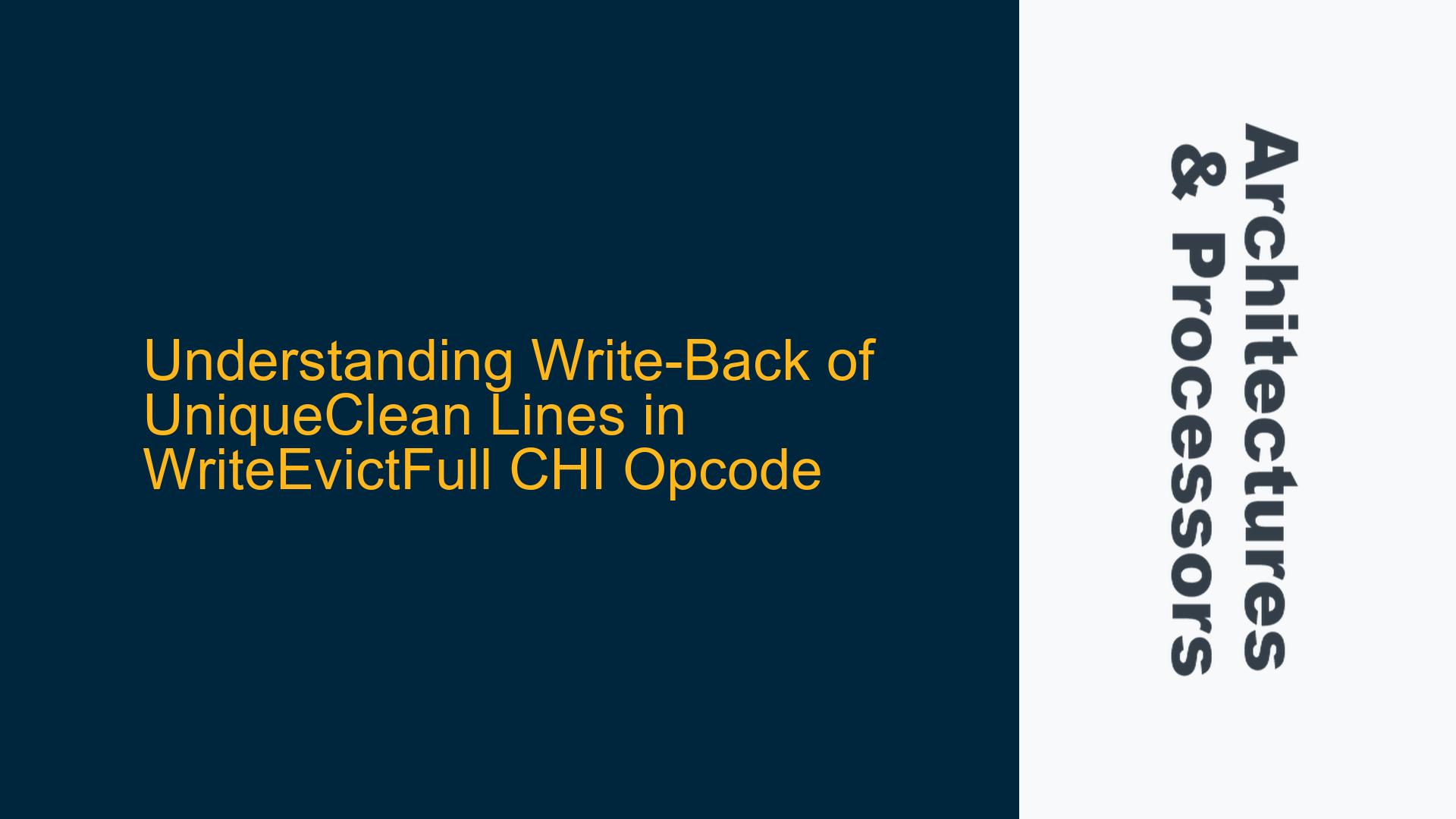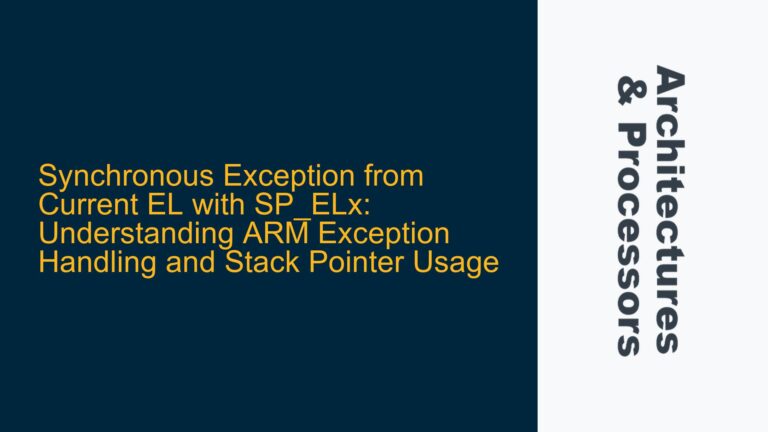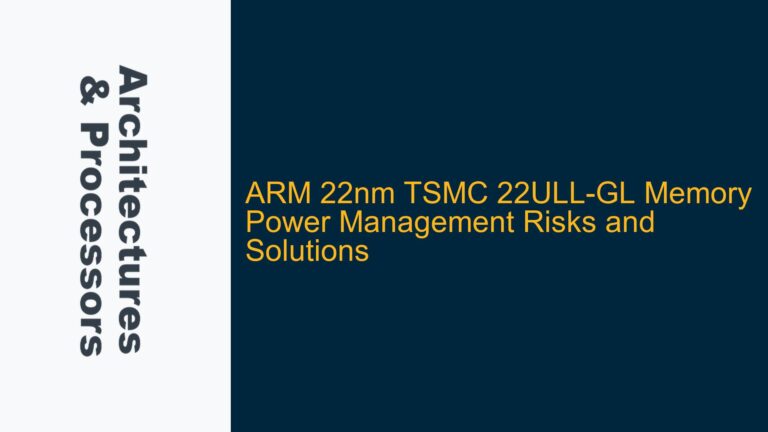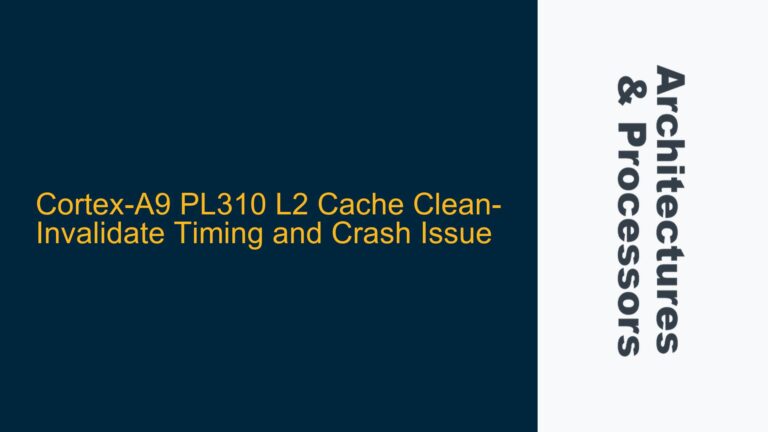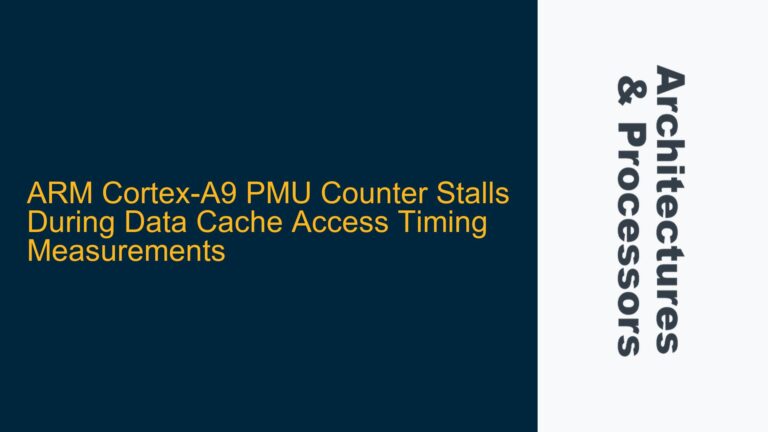ARM CHI Protocol and WriteEvictFull Opcode Behavior
The ARM Coherent Hub Interface (CHI) protocol is a critical component of ARM’s system architecture, designed to manage cache coherency and data transfers between different nodes in a system. One of the key operations in the CHI protocol is the WriteEvictFull opcode, which is used to write back a cache line to the next level of cache and then evict it from the current cache. This operation is particularly relevant when dealing with cache lines in the UniqueClean state.
A cache line in the UniqueClean state is one that is exclusively held by a single cache (no other caches have a copy) and is clean, meaning that the data in the cache line matches the data in the main memory. At first glance, it might seem unnecessary to write back a UniqueClean line during a WriteEvictFull operation since the data is already consistent with the main memory. However, the CHI protocol mandates this write-back, and understanding the rationale behind this requirement is crucial for optimizing system performance and ensuring correct behavior in multi-core systems.
The WriteEvictFull opcode is designed to ensure that the data in the cache line is written back to the next level of cache before the line is evicted. This behavior is not just a redundancy but a deliberate design choice to improve system performance and reduce latency for other requesters (RNs) that might need access to the same data. By writing back the UniqueClean line, the system ensures that the data is available in a shared cache (e.g., L3 cache), which can be accessed more quickly than snooping the cache of the original requester.
Performance Optimization and Latency Reduction
The primary justification for writing back a UniqueClean line during a WriteEvictFull operation lies in performance optimization. In a multi-core system, multiple requesters (RNs) may need access to the same data. If a cache line is evicted without being written back to the next level of cache, other requesters would need to snoop the original cache to obtain the data. This snooping operation can introduce significant latency, especially if the original cache is located in a different part of the system, such as a different cluster or chip.
By writing back the UniqueClean line to the next level of cache, the system ensures that the data is readily available in a shared cache, which can be accessed with lower latency. This is particularly important in systems with a hierarchical cache structure, where the next level of cache (e.g., L3 cache) is shared among multiple cores or clusters. The shared cache acts as a central repository for data, reducing the need for costly snooping operations and improving overall system performance.
Moreover, writing back the UniqueClean line ensures that the data is preserved in the cache hierarchy, even if the original cache line is evicted. This is important for maintaining data consistency and avoiding unnecessary memory accesses. If the data were not written back, the system would need to fetch it from main memory the next time it is accessed, which would introduce additional latency and reduce performance.
Cache Coherency and Data Consistency Considerations
Another critical aspect of the WriteEvictFull opcode is its role in maintaining cache coherency and data consistency in a multi-core system. The ARM CHI protocol is designed to ensure that all caches in the system have a consistent view of memory. This is achieved through a combination of cache states, such as UniqueClean, and operations like WriteEvictFull.
When a cache line is in the UniqueClean state, it means that the data is exclusively held by one cache and is consistent with main memory. However, if the line is evicted without being written back, the system could lose track of the data, leading to potential inconsistencies. For example, if another requester attempts to access the data after the line has been evicted, it might receive stale or incorrect data if the line was not written back to the next level of cache.
The WriteEvictFull opcode ensures that the data is written back to the next level of cache before the line is evicted, preserving the data in the cache hierarchy and maintaining coherency. This is particularly important in systems with multiple levels of cache, where data can be shared among multiple cores or clusters. By writing back the UniqueClean line, the system ensures that the data remains accessible and consistent, even if the original cache line is evicted.
In addition to maintaining coherency, the WriteEvictFull opcode also helps to reduce the complexity of the cache coherency protocol. By ensuring that data is written back to the next level of cache, the system can avoid complex snooping operations and reduce the overhead associated with maintaining coherency. This is particularly important in large-scale systems with many cores and caches, where the complexity of the coherency protocol can have a significant impact on performance.
Implementing WriteEvictFull in ARM-Based Systems
Implementing the WriteEvictFull opcode in ARM-based systems requires careful consideration of the cache hierarchy and the specific requirements of the system. The following steps outline the key considerations and best practices for implementing WriteEvictFull in ARM-based systems:
Cache Hierarchy Design
The first step in implementing WriteEvictFull is to design the cache hierarchy to support the operation. This includes defining the levels of cache (e.g., L1, L2, L3) and their respective roles in the system. The next level of cache (e.g., L3 cache) should be designed to act as a shared repository for data, allowing multiple requesters to access the data with low latency.
Cache State Management
The next step is to implement cache state management to support the UniqueClean state and the WriteEvictFull opcode. This includes defining the cache states and transitions, as well as implementing the logic to handle the WriteEvictFull operation. The cache controller should be designed to detect when a cache line is in the UniqueClean state and to trigger the WriteEvictFull operation when the line is evicted.
Write-Back Logic
The write-back logic is a critical component of the WriteEvictFull operation. This logic is responsible for writing the data in the UniqueClean line back to the next level of cache before the line is evicted. The write-back logic should be optimized to minimize latency and ensure that the data is written back efficiently.
Performance Optimization
Finally, the system should be optimized to take advantage of the WriteEvictFull operation. This includes tuning the cache hierarchy and the write-back logic to reduce latency and improve performance. The system should also be tested to ensure that the WriteEvictFull operation is working correctly and that it is providing the expected performance benefits.
Conclusion
The WriteEvictFull opcode in the ARM CHI protocol is a powerful tool for managing cache coherency and optimizing system performance. By writing back UniqueClean lines to the next level of cache, the system ensures that data is readily available to other requesters, reducing latency and improving performance. This operation also plays a critical role in maintaining cache coherency and data consistency in multi-core systems. Implementing WriteEvictFull in ARM-based systems requires careful design of the cache hierarchy, cache state management, and write-back logic, as well as performance optimization to ensure that the operation is providing the expected benefits. By following these best practices, system designers can leverage the WriteEvictFull opcode to build high-performance, coherent ARM-based systems.
